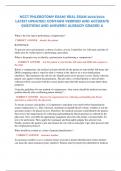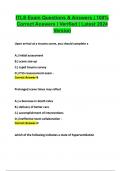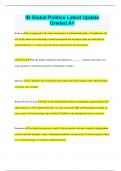Exam (elaborations)
NCCT PHLEBOTOMY EXAM| REAL EXAM 2023/2024 LATEST UPDATED| CONTAINS VERIFIED AND ACCURATE QUESTIONS AND ANSWERS| ALREADY GRADED A
- Course
- Institution
NCCT PHLEBOTOMY EXAM| REAL EXAM 2023/2024 LATEST UPDATED| CONTAINS VERIFIED AND ACCURATE QUESTIONS AND ANSWERS| ALREADY GRADED A
[Show more]





